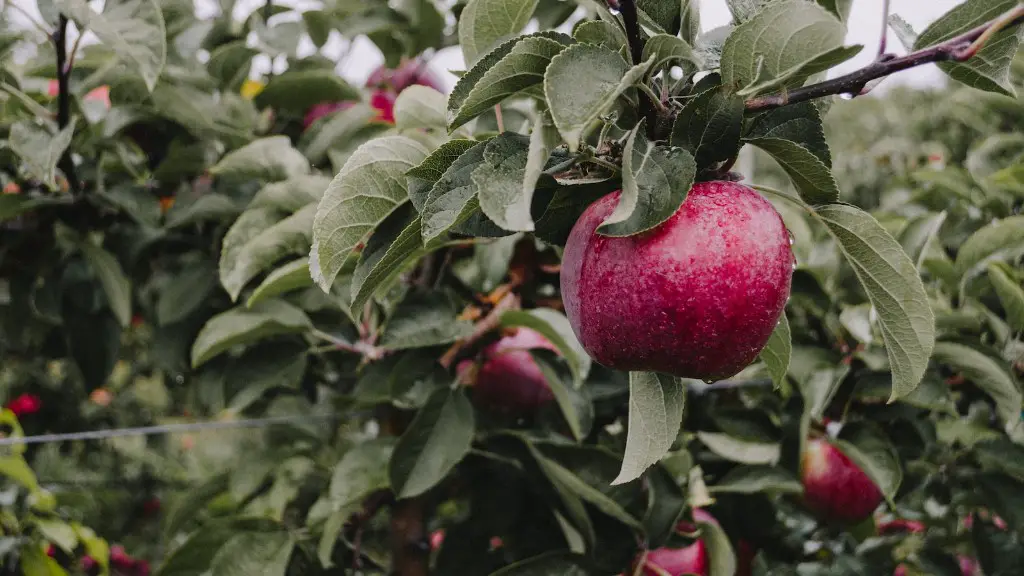Planting a small lemon tree can be a rewarding experience for anyone that enjoys citrus fruits. Beyond being an attractive addition to the home, it can provide an opportunity to learn about botanical science. With the right materials and knowledge, a small lemon tree can be planted in any sunny area with adequate drainage. Creating the ideal environment for a flourishing lemon tree starts with the following tips:
1. Get a small lemon tree with a root ball less than one foot long and upper branches no larger than three feet. Container trees can also be used, but should be only slightly larger than what was purchased.
2. Put down weed barrier cloth and a layer of gravel to ensure proper drainage. This will also help to reduce weed growth and competition.
3. Create an appropriate soil mixture, mixing together nutrient-rich potting soil and amendments like peat moss and compost to create the most favourable environment.
4. Place the lemon tree in the hole, taking care to ensure it is not planted too deeply.
5. Add a layer of mulch at least two inches deep around the base of the plant to retain moisture and protect the roots from extreme temperatures.
6. Water the lemon tree regularly to create a moist but not soggy environment. If a container tree is used, check soil moisture content regularly to avoid over-watering.
7. Finally, fertilize the small lemon tree every two to three weeks, using an appropriate citrus specific fertilizer.
Pruning and Training
In order to cultivate a strong lemon tree and promote fruit growth, pruning and training is essential. If the lemon tree is planted in the ground, the branches should be tied at the desired height, ensuring that the tree receives adequate sunlight with plenty of air circulation. If a container is used, prune stems to keep the height of the tree to the desired proportions.
When pruning the lemon tree, remove any dead, damaged, or splitting branches. Pruning should also be used to ensure that the tree has adequate space between branches. This will help to ensure strong growth and promote air circulation, which is essential for healthy lemon tree growth.
In addition, the lemon tree should be trained so that fruit production is maximized. When branches turn inward or begin attaching themselves to other branches, they should be tied to support stakes or trellises. This will help to avoid inter-branch rubbing which can cause wounds to the tree and fruit.
In order to budding and grafting, a lemmon tree must be pruned properly; this should be discussed further with an expert in plant science.
Harvesting Lemon Tree Fruits
When fruits have ripened and can be plucked with ease from the tree, they should be harvested. Lemons will generally keep for longer when stored on the tree; however, their shelf life is typically quite short. It is recommended that citrus fruits are cut from the tree and consumed within weeks for the best flavor and nutrition.
When harvesting, take care not to bruise the fruit or cut branches in the process. If the fruit will not pull away easily, wait for another few days for it to mature further and try again. Once harvested, lemons should be stored away from direct sunlight in a cool and dry area.
Preventing Disease
One of the biggest challenges in cultivating lemon trees is avoiding the spread of diseases. Common problem of the lemon tree include Mildew, Scab, Anthracnose, and Botrytis. To prevent the spread of disease, keep the area around the lemon tree free of debris, maintain adequate air circulation, and provide adequate drainage.
When signs of disease are visible, prune away affected branches, properly discard the affected material, and treat the area with an appropriate fungicide. To avoid issues, ensure the pH level of the soil is around 6.0–6.5, as too acidic or too alkaline environment can make the lemon tree more vulnerable to viruses and other diseases.
Protecting Against Pests
In addition to disease, pests can be detrimental to lemon tree growth. These pests include caterpillars, scale, citrus leaf miner, and aphids. To protect against these pests, inspect foliage weekly for any signs of damage or infestations. If any are present, take necessary steps to remove them quickly. This can include using insecticides approved for citrus production.
It is also recommended to be proactive in pest control, by using natural and biological pest control solutions. Predators can be used to control pest populations, while insecticidal soaps and horticultural oils can be used to remove smaller infestations. If necessary, horticultural oils and insecticides should be applied late in the afternoon or during cloudy days to provide plant protection.
Caring for the Lemon Tree
The health of the lemon tree is dependent upon providing appropriate environment and care. Paying close attention and anticipating potential problems can help to ensure success. Established trees should be watered weekly, while younger trees should receive water more regularly, to ensure they are staying moist but not soggy.
Lemon Tree should also be fertilized every two to three weeks with a fertilizer appropriate for citrus production. In addition, do not forget to take time to prune the lemon tree to maintain health and growth. Taking care to prune during the appropriate season helps to promote strong growth.
Finally, looking out for any signs of disease, pests, or environmental stress can help to ensure a successful lemon tree planting. Taking quick action when necessary can help to keep the lemon tree flourishing.




